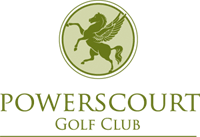Your Game – Your Strategy
A lot of these articles are fueled by actual situations or incidents that have happened out on the golf course or training grounds. Of course this doesn’t mean that everybody has the same difficulties in golf and so solutions to helping us to get the best out of our own games maybe varied. However in reading this hopefully it gets you to think about what are your strengths and weaknesses in your golf and how you can get the best out of them yourself.
While out on the course recently I asked someone how they would approach a particular hole. “I don’t really think about it, I just try and hit the same shot each time I play the hole” was the reply. The hole was not a terribly long par 5 and the golfer hit the ball with fade/slice shape. “If I get my tee shot away I can play the hole well” was the next comment. The hole had a water hazard on the right hand side that was 230+ yards away – about the same distance this golfer hit his driver. The hole then doglegged slightly left with both fairway and a particular deep green-side bunker on the left hand side of the hole, the rough was not that long. After playing a driver and putting the ball in the water hazard I suggested he try another tee shot but this time with his 3 wood a club that he hit a maximum of 200 yards. Once again he sliced it but was only in the light rough. As the ball was sitting OK he hit his 3 wood again and although his fade took the ball into to right hand side rough he only had a shot of 106 yards which he hit with a little 9 iron to 15 feet from the pin. Wouldn’t it be great to finish with a single putt – unfortunately he didn’t he 3 putted!
Choosing targets that match your shot patterns and abilities is one approach we can use out on the course to avoid the “big miss” or areas that are going to run up our scores really quickly like out of bounds or water hazards. This may mean aiming into certain parts of the rough for some golfers. Of course the key to this is first of all you must understand your shot pattern. This should include how far you realistically hit each club as well as the shape and direction you finish up with on a regular basis. This is not negative, it is sensible. It doesn’t mean you can’t go off and improve your patterns but be realistic this will take a bit of practice and time. In my experience a lot of golfers both overestimate the average distance they hit the ball and they aim for targets that often have no margin of error relative to their natural habits.
Choosing target areas also means identifying those general areas we can score from and those that make life difficult for us. For example I think one of the areas that any golfer of any level should be mindful of is the long (about 60+ yards) greenside bunker shot. It is generally accepted this is one of the most difficult shots to execute well especially if the hazard has a steep face. This also means that some of these areas around a green in particular may change depending on pin positions.
When under pressure out on the golf course it is generally better the less you have to think about or question what you do. This may sound like a contradiction to what is written above but it is not – it is an emphasis on what is meant by preparation or having a strategy. This is what players and caddies are working out during practice rounds. One of the problems club golfers may have is that playing the same course every week, the idea of having a plan to understand good target areas may not have been thought about. It may be a great exercise to think about your own course in relation to your abilities and the good and poor scoring areas. You will no doubt find that it is not going to be totally different but if you tip the odds in your favour by finding a few better areas to aim for you can save a few shots without having to do any work on the training ground.
Paul Thompson has been the Fellow PGA Professional at Powerscourt Golf Club in Wicklow since 1995. In addition to providing coaching on-site he also is a coach with The Golfing Union of Ireland. Appointments with Paul can be booked via Powerscourt Golf Club Reception: Tel (01) 204 6033 or the Golf Shop Tel (01) 204 6031. Read more about lessons from Paul Thompson by visiting the Powerscourt Golf Club Website.



